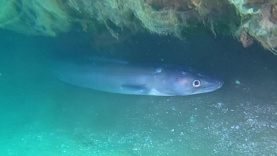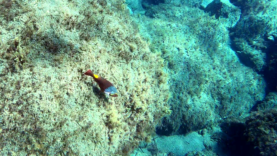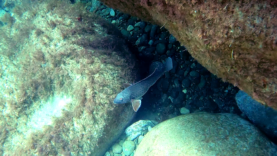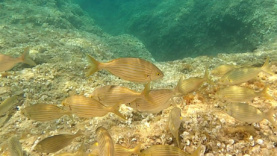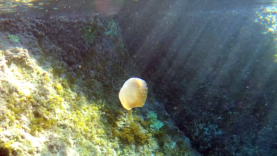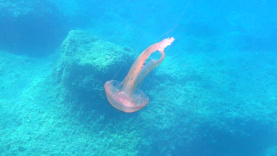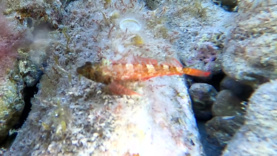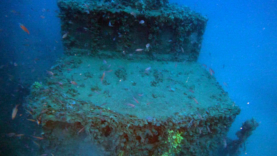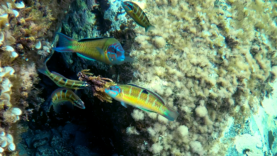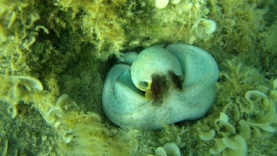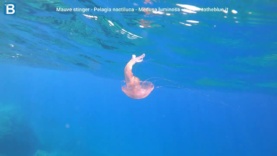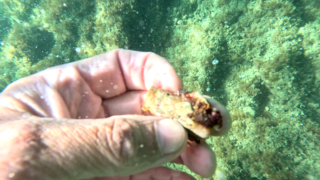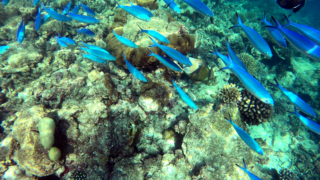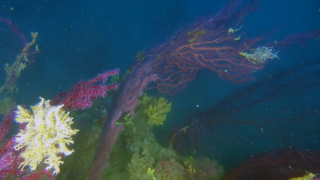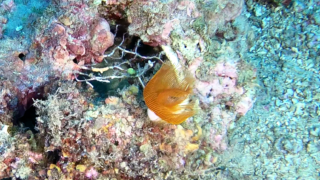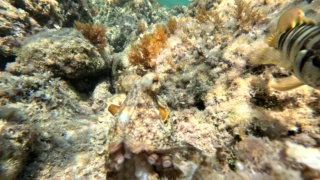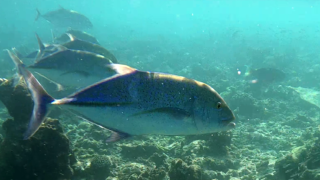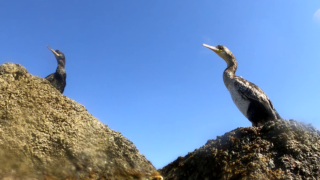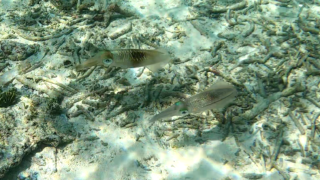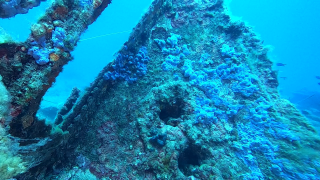Mauve stinger
In this video
In this video made in summer we filmed Mauve stinger or Purle jellyfish, Pelagia noctiluca luminous jellyfish. We stopped to film three specimens we met during the same swim, snorkelling in the waves, trying hard to avoid contact with these jellyfish. In fact, the Pelagia noctiluca – Luminous jellyfish – is the most dangerous jellyfish in the Mediterranean Sea, contact with its tentacles can cause painful skin irritations and burns.

The problem with this jellyfish is that being practically almost transparent it is practically impossible to see it in the water without a mask, moreover when it is hunting it extroverts the stinging secondary tentacles which can be even a few meters long. As can be seen in the encounter with the second jellyfish in the video, they are long and very thin, only the reflection of the sunlight allowed us to film them well enough with the camera to be able to see them in the video.

It is these secondary tentacles that cause the annoying irritations and burns among swimmers during the months of July and August, since even if we see the jellyfish we think we can find ourselves at a safe distance by not considering the length and invisibility of these tentacles. However the problem is easily solved by using the mask and keeping distance.
Another feature to note is that these jellyfish emit a certain bioluminescence that is imperceptible during the day but visible during the night.

Mauve stinger (Pelagia noctiluca), luminous jellyfish (Purple jellyfish), is a jellyfish of the Pelagiidae family.
Distribution and habitat
It is common in the Mediterranean Sea and in the eastern Atlantic Ocean up to the North Sea; it has been mentioned in the chronicles (in 1992, 2003 and 2005) for its abundance in our seas in some periods and for the painful irritations it causes if touched. It is a pelagic species, but in autumn and spring it approaches the coast.

Description
Pinkish-brown or violet-pink umbrella of about 10 centimeters in diameter, translucent, composed of 16 lobes from which 8 long retractable tentacles depart, very stinging and semi-transparent, which start from the edges and can extend up to 2 metres. The oral arms, the same color as the umbrella, are up to about 30 centimeters long.
The specific noctiluca epithet derives from the iridescence, green in color, with which it is endowed.
Biology Diet
It feeds on plankton and small fishes which it catches through its tentacles equipped with stinging nematocysts.

Reproduction
P. noctiluca is one of the jellyfish that does not pass through the polypoid stage during maturation. The adults have separate sexes: the female lays her eggs in the sea, which are fertilized by the males’ sperm. The planula is born from the zygote, a larva equipped with cilia for movement and which disperses at a planktonic level. However, it does not go through the scifistoma stage, anchoring itself to the ground, but divides directly into ephyra, a young jellyfish which will then grow to form the adult jellyfish.
https://it.wikipedia.org/wiki/Pelagia_noctiluca
https://en.wikipedia.org/wiki/Pelagia_noctiluca
Gallery

